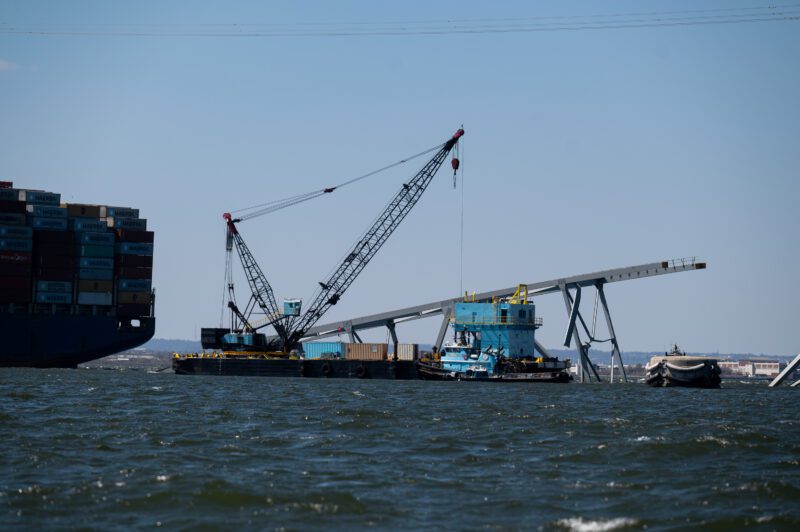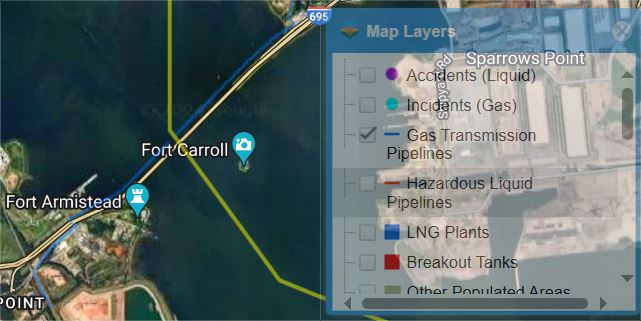Photo Shows Dutch Cargo Vessel Aground in the Canadian Arctic as Salvage Effort Looms
The Dutch-flagged 21,359-dwt general cargo vessel Thamesborg remains aground along the Northwest Passage in the Canadian Arctic four days after hitting a shoal.
by Captain John Konrad (gCaptain) Salvage efforts to remove the MV Dali from Baltimore’s Key Bridge were delayed indefinitely yesterday after a high-pressure subsea natural gas pipeline was discovered under the wreckage.
Yesterday, the Maryland Port Authority held a meeting at the unified incident command center located at the Maryland Cruise Terminal in Baltimore. The Army Corps of Engineers and the US Coast Guard outlined their priorities: firstly, to open the shipping channel; secondly, to secure and remove the MV Dali; and thirdly, to initiate salvage operations “from the inside out”.
According to a source at the meeting, the salvage company DonJon-SMIT has been assigned to work with US Navy Salvage Operations (SUPSALV) to clear the bridge. Meanwhile, SCANSKA has been hired by the State of Maryland to secure the shoreside components of the bridge structure.
Earlier this week, Secretary of Transportation Pete Buttigieg assigned the most delicate task of the operation, extracting the ship, to the American salvage company Resolve Marine, an industry leader with offices worldwide.
Our source indicates that approximately three to four thousand tons of steel and concrete are presently resting on the ship’s bow. Photos of the ship visibly depict the stern elevated above the bow, and experts suggest that the weight of the bridge is pinning it to the seabed.
One salvage master we interviewed said sections of the bridge have cut through the deck causing serious structural weakness. “Imagine putting a steel bar in a powerful metal vise,” he said. “Now lift and drop the end of that bar. The tide is your hand lifting and dropping that bar. Each time you do, the vise digs deeper into the steel, and the bar weakens. It’s crucial to loosen that vise by removing the bridge segments that are pinning it down as soon as possible.”

Time is always a factor in salvage operations with weather conditions near the top of the list of concerns. “The more time an operation takes, the greater the possibility a low-pressure system moves in and does further damage.”
Despite the clock’s importance, expert salvage teams such as Resolve will not jeopardize worker and environmental safety and two critical factors have indefinitely paused the salvage efforts.
The main reason for the delay is the ongoing search and recovery mission. Sources from the Joint Incident Command Center told gCaptain that intense political interest, driven by extensive media coverage, is putting pressure on the command leadership and salvage masters to speed up the process. However, the salvage teams have emphasized that they will not rush and cannot work safely while the search and recovery efforts for the four missing bridge workers are still ongoing.
“What needs to be priority number one, the looming problem right now, is who’s in charge of this,” said maritime historian Sal Mercogliano in a recent video about the salvage efforts. “There is an election coming in November. There are too many players, too many people, too much posturing.”
This situation presents challenges. However, sources have informed gCaptain that the salvage companies are navigating around political concerns and have refused to rush the efforts.

So far those pressures have only delayed the efforts but yesterday operations were paused indefinitely. The concern came during the due diligence process when salvage engineers discovered a high-pressure gas line near the wreckage. According to one source, both the Department of Transportation’s US Maritime Administration (MARAD) and the US Pipeline and Hazardous Materials Safety Administration (PHMSA) have been notified.
A pipeline safety expert from PHMSA confirmed concerns about a particular pipeline. They informed us, off the record, that the operator was notified and the pipeline has been isolated and depressurized. PHMSA records indicate that the pipeline, which carries natural gas under high pressure, is owned by Baltimore Gas And Electric (BGE). It remains unclear when BGE was alerted and when the pipeline was shut down.
Despite the shutdown, salvage teams aren’t willing to further risk the ship, the crew, and their own members. They require a review of the undersea documents and a survey of the pipeline before resuming.
“This will undoubtedly cause additional delays to the operation,” said a senior official at the meeting. Even after the risks to the pipeline have been fully mitigated, “the timeline to remove the debris from the ship is very uncertain.”
This update has been published on the official unified command website:
The Unified Command is working in partnership with BGE to reduce pressure of an underwater pipeline that spans the width of the channel and runs under the incident site. Unified Command is coordinating to inert the pipeline to free it from hazards and risk. Pipeline operations will continue through the weekend.

Sign up for gCaptain’s newsletter and never miss an update

Subscribe to gCaptain Daily and stay informed with the latest global maritime and offshore news


Stay informed with the latest maritime and offshore news, delivered daily straight to your inbox
Essential news coupled with the finest maritime content sourced from across the globe.
Sign Up